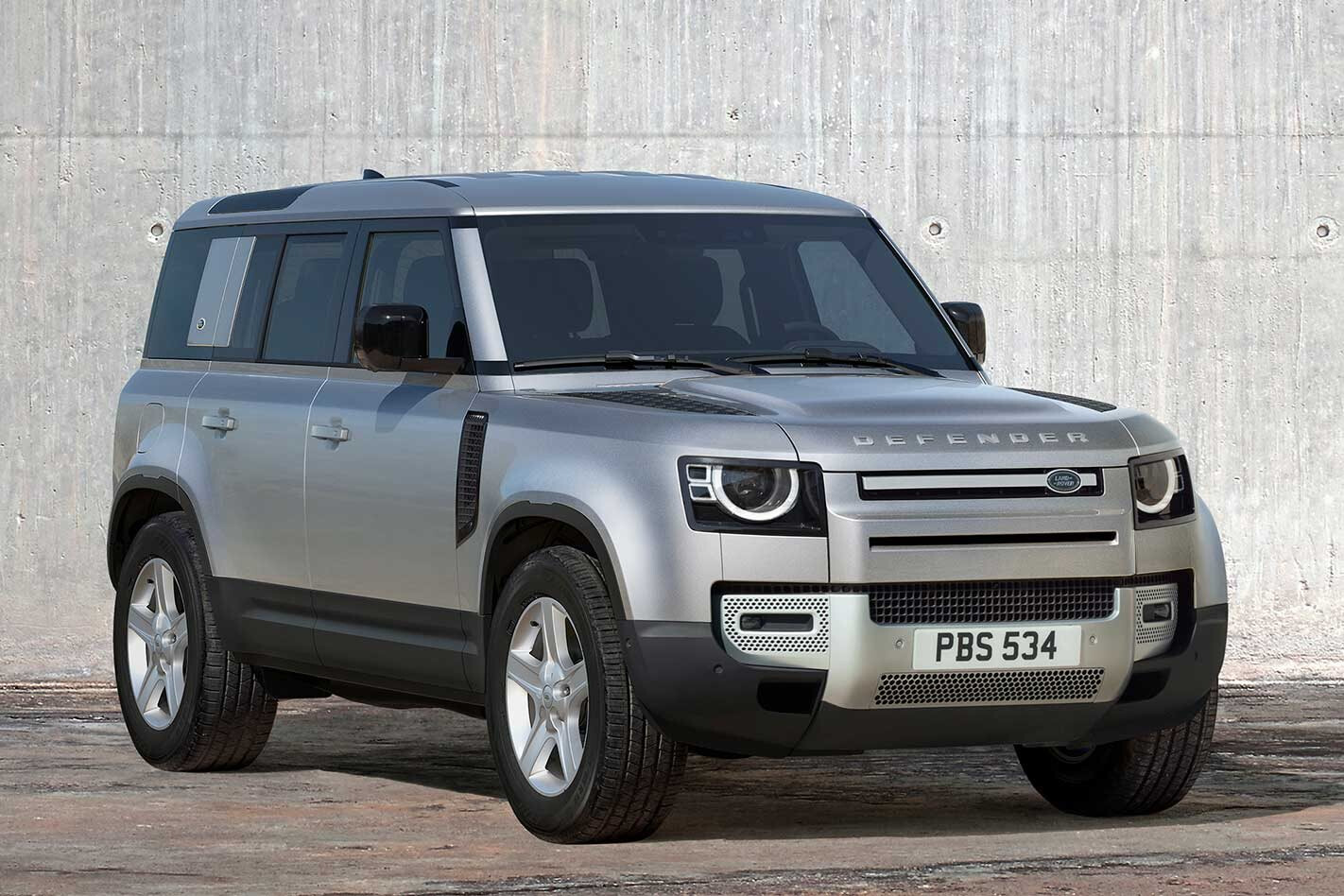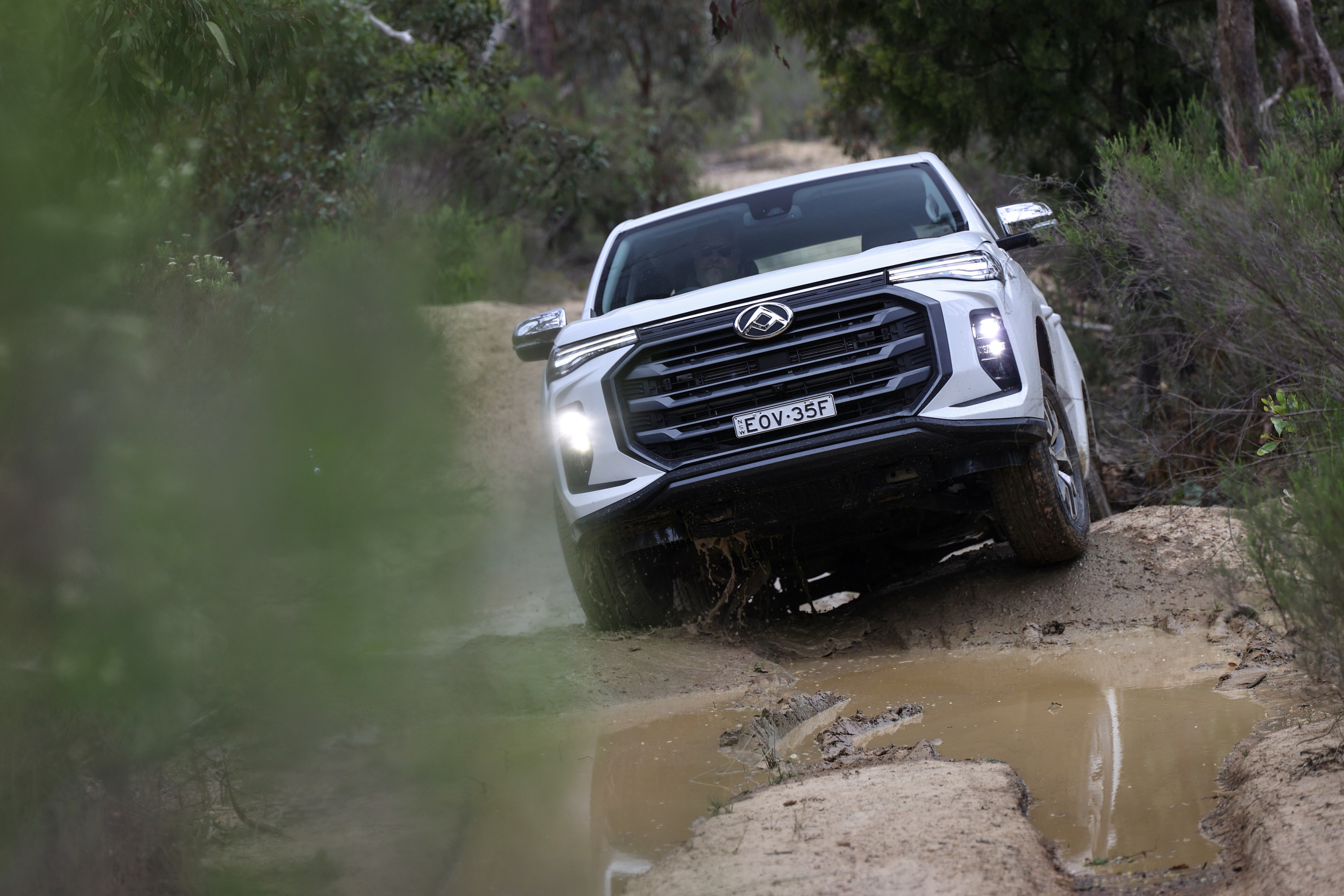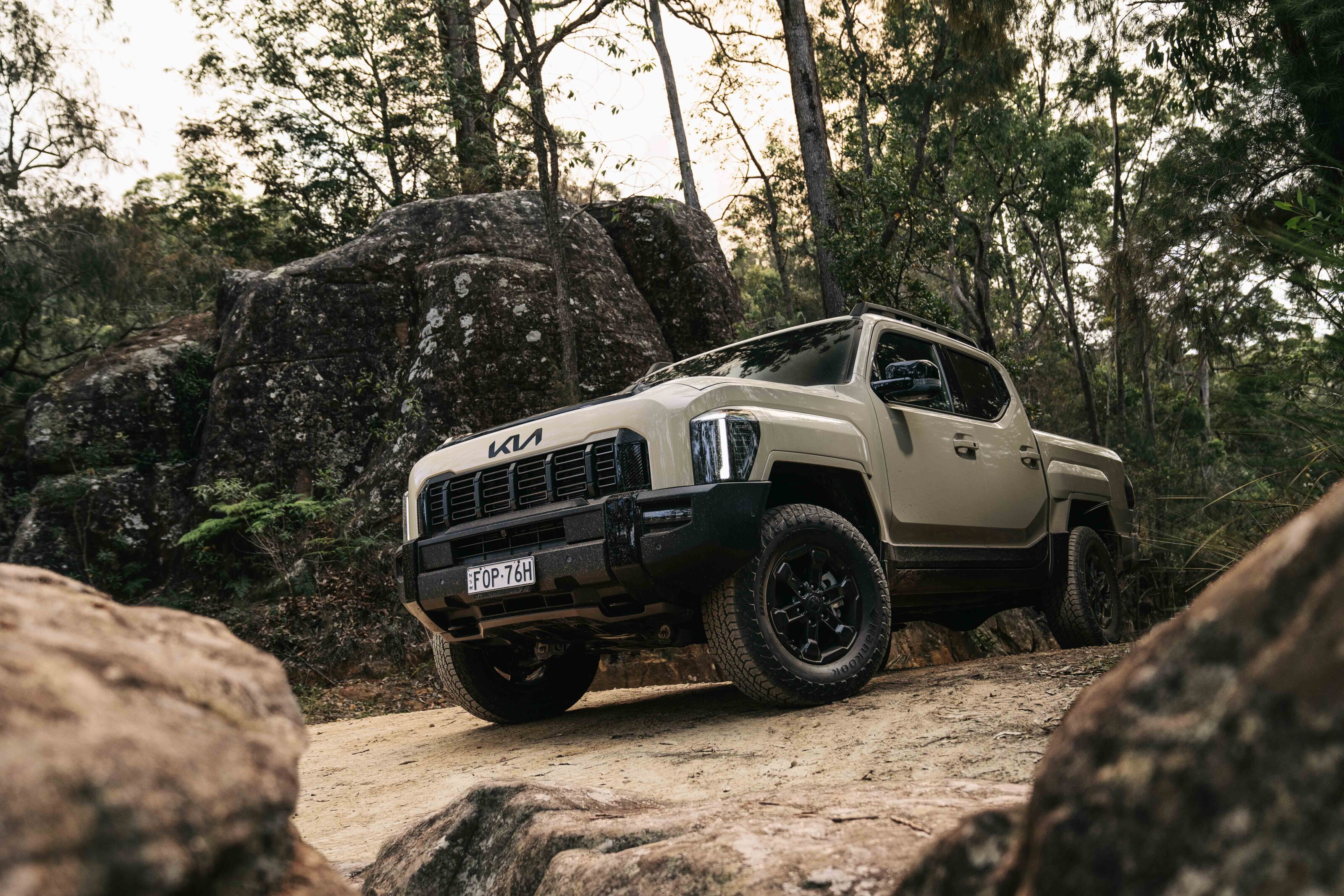UNVEILED at the 2019 Frankfurt Motor Show, the new 2020 Land Rover Defender is a powerhouse of technology housed in more futuristic styling that acknowledges the original Land Rovers but moves the design game along.
We spent hours with the designers and engineers who spent the best part of a decade bringing the new Defender to market, to get a detailed rundown of the second generation of a Land Rover classic.
Here’s everything you need to know about the all-new Land Rover Defender.
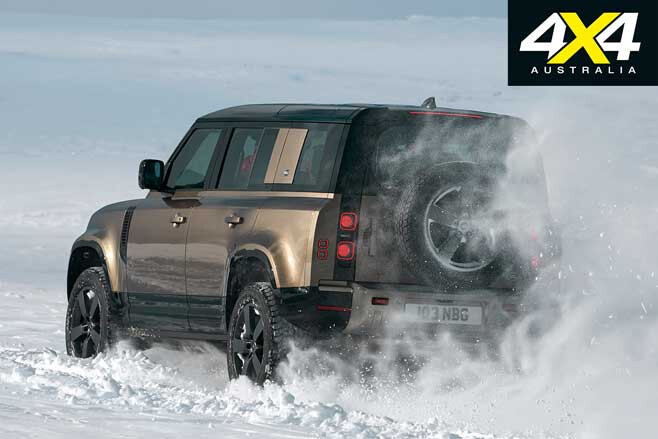
1 – It is all-new
“All-new” is a phrase often bandied around freely in the car industry, but with the new Defender it really is all-new. No single component is shared with the previous Defender, not even a badge.
2 – Aluminium versus steel
The core of the Defender is radically different to the original. The original Land Rovers had aluminium body panels and a steel ladder-frame structure. The new one is almost the opposite. It has an aluminium intensive monocoque body (with high-strength steel used selectively for strength) and mostly steel panels, including the doors and front guards.
3 – Tell ’em the price
The only clue Land Rover Australia is giving regarding Defender pricing is that the 110 will start at around $70,000 plus on-road costs. Look at the UK pricing and the 90 starts at £35,000 with the 110 kicking off at £45,240. However, that £35K base 90 is a commercial model with minimal equipment, which is a car that won’t initially be sold here. So, best guesses are that the 90 should start somewhere around $60,000 in Australia.
4 – Tough stuff

The new Defender sits on an architecture called D7x, the “x” denoting extreme. Engineers say “in some areas it shares some geometry similarities” with the D7 architecture that underpins the Range Rover, Velar and Discovery. However, those same engineers say the design “started with a blank sheet of paper” and that it is “a completely unique body structure” that has been “taken to a new level”.
5 – Name game
Engineers say they “had a conversation” about whether to continue the 90 and 110 model designations. The numbers originally referred to the approximate wheelbase in inches, but the wheelbase of the new cars has grown 227mm for the Defender 90 and 228mm for the Defender 110 (about nine inches). “There’s so much passion, enthusiasm for [those names]… there’ s a lot of heritage in those names,” one of the engineers told us.
6 – Engine options: diesel focus
The Defender will initially be offered with four engines around the world: two 2.0-litre four-cylinder turbo-diesels, a 2.0-litre turbo-petrol and a 3.0-litre inline six-cylinder turbo-petrol with a mild hybrid electric system boosting performance. Australia will get three of those four engines – the 2.0-litre petrol four-cylinder won’t be offered here. Down the track Land Rover will also offer a PHEV (plug-in hybrid electric vehicle) with an electric motor and battery that can drive the car for short distances on electricity alone, with the engine as a backup for more power and to recharge the batteries as required.
7 – Rear overhang identical
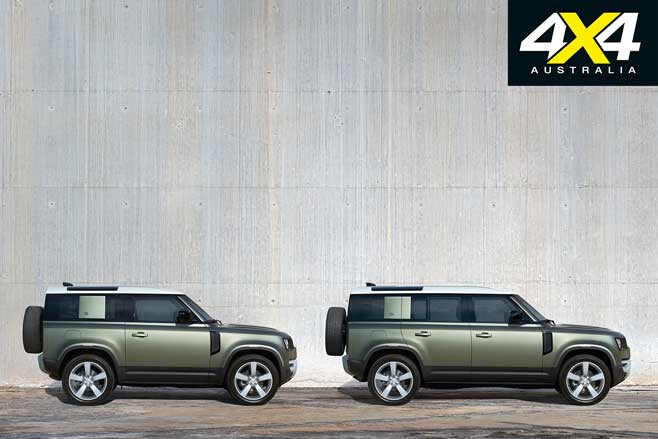
The front and rear of the Defender 90 and Defender 110 are the same. With the old Defender the 110 had more rear overhang, but with the new model it’s identical, indicative of a substantial design shift. That means the only difference between the two is the 435mm in the centre of the car to accommodate the 110’s rear doors.
8 – 130 in the wings
Leaked internal documents suggest the third Defender – the 130 – will join the family from 2022. Land Rover isn’t officially saying anything for now, but those leaked documents suggest the 130 will share the 110’s 3022mm wheelbase but with a larger body with more rear overhang.
9 – Defender pick-up
No word yet on a Defender pick-up; although, the fact engineers have talked about it suggests it’s somewhere in the mix. “You can theoretically do a pick-up from a monocoque [body],” one engineer told 4X4 Australia. “There’s the potential.” If it does happen it’ll be years away.
10 – Air suspension standard on Defender 110
The shorter wheelbase Defender 90 three-door will be offered with standard coil suspension or optional air suspension, the latter allowing up to an additional 145mm of lift. The air suspension is standard on the Defender 110.
11 – Automatic choice
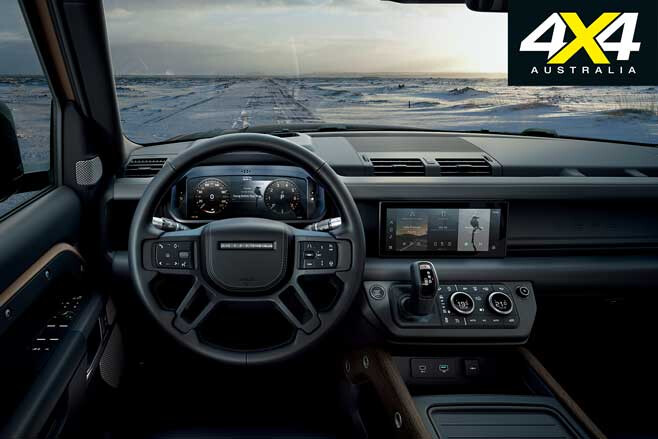
The original Series Land Rovers and Defender were produced only with a manual gearbox whereas the new Defender only comes with an eight-speed automatic (the transmission is produced by ZF).
12 – Wheels & Tyres
The Defender will be available with tyre diameters ranging from 18 to 22 inches (there are 18s, 19s, 20s and 22s). The 18- and 20-inch wheels will be available with factory-approved all-terrain tyres. And, of course, there will be aftermarket suppliers swarming to offer more appropriate rubber for those planning serious off-road work.
All Defenders will be fitted with alloy wheels, but Land Rover is also offering 18-inch steel wheels as an optional accessory. The steelies look great finished in white paint for a hint of retro ruggedness.
13 – Rear-mounted spare wheel
The spare wheel mounted on the rear adds 260mm to the length of the Defender.
14 – Defender’s electrics gets IP67 electrical rating
The electronics and connections in the new Defender have been designed to meet the IP67 water immersion standards. That means they can be submerged in one metre of fresh water for an hour without intrusion or damage.
15 – It is able to wade through 900mm of water

Like the Discovery the Defender is rated to wade through 900mm of water. Engineers say it could theoretically deal with deeper water, albeit with risk of the car floating, particularly with any side currents. If you end up in deeper water and the car starts floating, engineers say the doors can be cracked open to allow some water to flow into the cabin, in turn temporarily adding weight to help with traction. Obviously there will be water damage to carpets and trims, but engineers say the electrics should be fine.
16 – Recovery points
As they are on many modern Land Rovers, recovery points are hidden behind styling fascias, requiring their removal to access them. Engineers headed for the mud of Eastnor Castle in England – a famous Land Rover test facility – to test the recovery points of the new Defender. With the aim of getting the car bogged, the head of the accessories program, Sean Henstridge, then instructed his team to remove the quarter turn fixings attaching the plastic fascias to then expose the recovery points. It took five hours to recover the car, prompting the development of an accessory front cover that leaves the lashing points exposed.
17 – 4 and 6 cylinder counts for the Defender
Land Rover’s V8 engines can technically fit in the Defender body, but the company says there are no plans to add a V8 to the expansive model mix.
18 – Stepping up
There’s only one optional sidestep for all Defender models. 110 models simply use two of those developed for the Defender 90 – and each is interchangeable from left to right. Unlike those on the Ranger Raptor, they are not rock rails.
19 – Two mudflaps
The standard mudflaps that are more about light rain and spray can be replaced with accessory mudflaps that provide broader coverage.
20 – Elasticised wheel cover
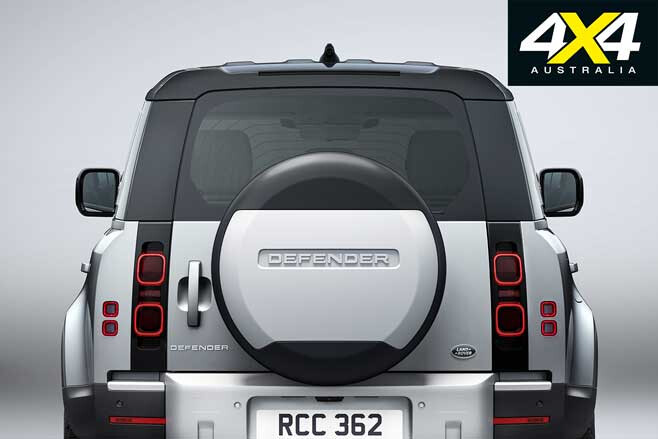
The spare wheel cover on the rear is elasticised, so they’re designed to cover everything from 18- to 22-inch wheels.
21 – Let there be light
There may be 170 accessories on offer for the Defender but none include better high-beam lights or spots. That’s because engineers found such variation in regulations around the world, instead deciding to leave it to the aftermarket to provide better long-range night visibility. Longer term Land Rover says it is “trying to find a way” to offer a factory approved light kit.
22 – Battery charge
The regular 12V battery sits beneath the driver’s seat of right-hand drive cars. Engineers say there is “easy access” for replacement or upgrades. But there’s no second battery and no separate fuse box for accessories.
23 – The Defender’s optional winch
The Defender will be offered with an optional remote-operated winch with a 4536kg (10,000lb) load rating. It’s hidden behind the numberplate frame and requires the removal of that unit to use it. The winch can be remote-operated up to 45m from the car and has a 40m-long synthetic rope.
24 – On the roof
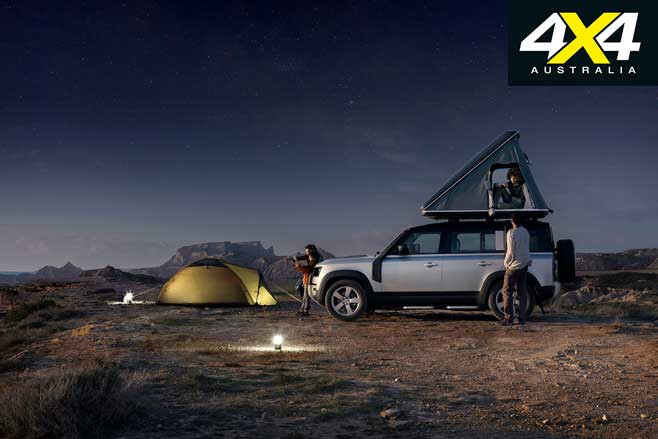
The roof rack weighs 36kg (for the 110) and has been engineered to reduce aerodynamic drag and unwanted wind noise. It can carry 168kg while driving and 300kg when the car is stationary, allowing for a two-person tent up top.
25 – Loading up
The side gear carrier that hangs off the side window can carry up to 17kg. It’s been designed for wet or dirty items and includes a plug for easy drainage. It can only be fitted to the right-hand side of the vehicle because it is mounted to the strengthened brackets used for the tailgate hinges.
26 – Strengthened tailgate
Engineers have beefed up the hinges and brackets on the tailgate mounting point of the new Defender, ensuring it can cope with the punishment of corrugation and bumps, even with the spare tyre hanging off it. They’re confident the sagging tailgates of well-used Defenders will be a thing of the past. That’s also why the optional gear carrier can only be fitted to the right-hand side of the car – because its 17kg load limit relies on the bracing and reinforcement for the tailgate on that side of the car.
27 – Made for Australia
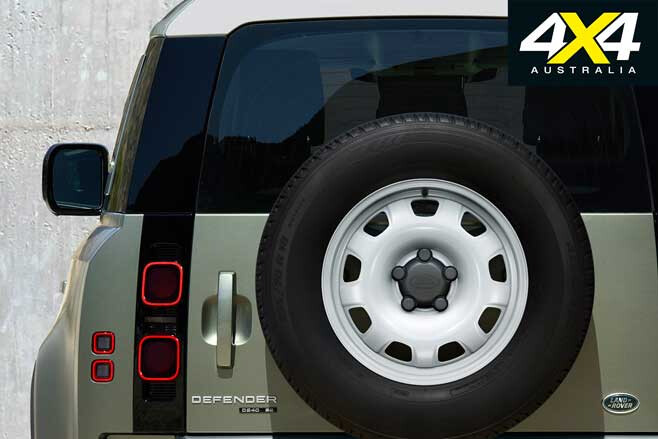
For both left- and right-hand drive markets the Defender’s tailgate is hinged on the right (driver’s side) of the car, so the tailgate swings open to the kerb – perfect for our market. It’s a rare example of a car maker optimising the tailgate layout for right-hand drive markets.
28 – Colours
The Defender will initially be offered with seven factory colours, with another five coming on stream soon after launch. One of those initial seven colours is called Tasman Blue, after the Tasman Sea that splits Australia and New Zealand. It’s said to be “a modern interpretation of Defender Blue”.
29 – Factory wrap
Pinstriping of the paint (from rubbing along bushes or branches) could be a thing of the past, with Land Rover offering a factory-fitted wrap in matte colours to the Defender. It’s claimed to have “scratch recovery” properties, whereby light scratches will effectively melt out with some heat, such as when the car is parked in the sun. While the original wrap is fitted at the factory, Land Rover says it can be removed and replaced during the life of the car.
30 – Exposed beam
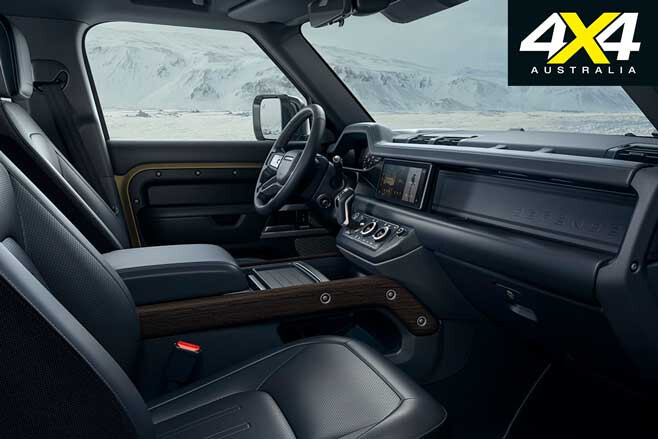
The Defender is the first car to expose the dashboard crossbeam and use it as a key part of the design in the car. It features grab handles at either end and can be powder-coated on top of a primer layer for an industrial look and feel.
31 – Bullbar
Land Rover has developed a ’roo bar specifically for Australia. To be made of steel, the bar will be offered as an accessory, keeping intact all sensors and safety systems. The ’roo bar will be revealed closer to the car’s June 2020 on-sale date.
32 – Chequered life
The chequer plate made famous on Land Rovers in Australia makes a return on the new Defender – sort of. On the bonnet is something that looks like chequer plate; although, it’s not designed to be stood on. That’s because it’s made of plastic, one of the requirements to ensure it meets the latest pedestrian protection regulations.
33 – Two into 4(x4)
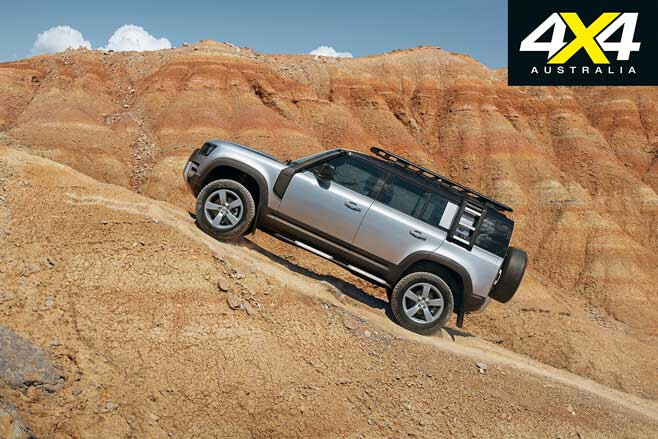
All new Defenders have dual-range four-wheel drive and there are no plans to offer anything different.
34 – Crawl time
The Defender has an impressively low crawl ratio of 51.5:1 for diesel versions and 57.2:1 for the six-cylinder petrol.
35 – Arm rests
The Defender gets arm rests on the door for the first time. It’s indicative of a major step up in comfort levels for a car hoped to appeal to a wider audience.
36 – Jump seat

The new Defender will be offered with a jump seat between the two front seats, something that takes seating capacity to six. The optional jump seat sits higher than the outer front seats and is very much a temporary seat, but it’s a novel retro-inspired option for those who think they may occasionally need another pew. The jump seat also incorporates cupholders and arm rests on its backing, so it can transform into a centre console when not in use as a seat.
37 – Take a seat
The new Defender will be offered in five-, six- or seven-seat layouts. For the seven-seat, Land Rover calls it a 5+2, suggesting the third row is best reserved for occasional use. Six-seat versions run two rows of three seats, with the jump seat up front for occasional use. While it is technically possible to offer an eight-seater – with a 3-3-2 configuration – engineers decided against it due to issues with exceeding weight limits.
38 – Powering up
The new Defender will be offered with a 230V electrical socket for powering accessories and low-powered gadgets that may accompany you on adventures.
39 – Connected
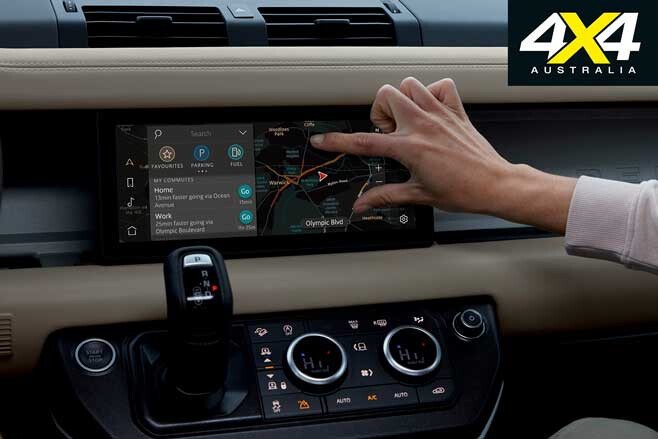
Land Rover discussed the limits of 4G (and upcoming 5G) mobile coverage in keeping the car always connected and allowing for over-the-air software updates. However, the company decided against fitting satellite phone data systems in each car, instead leaving it to portable sat-phones with a Wi-Fi connection for those desperate to update their vehicle in the bush.
40 – 85 computers in new Defender
Whereas a radio was a high-tech addition during the unusually long tenure of the original Land Rover, the new Defender has 85 ECUs, or computers. Working in harmony, Land Rover says they can turn the off-roader into “an all-terrain super-computer capable of handling 21,000 network messages at any one time”. Let’s just hope none of those 1s and 0s heads down the wrong path…
41 – Aerodynamic efficiency
The new Defender has a co-efficient of drag (Cd) as low as 0.38, well below the 0.62 of the old Defender. However, that is for the P300 model that won’t be sold in Australia. The three engine variants sold here have a Cd of either 0.39 (Defender 110 D200 and D240) or 0.40 (Defender 110 P400 and all Defender 90s).
The almost vertical tail and squared edges are arguably the most retro part of the new Defender, faithfully putting a modern spin on the original’s rump. But there’s also an aerodynamic advantage to the squared edges, the swift separation of air reducing drag at speed. The rear-mounted spare tyre also manages to stay out of the air flow.
42 – Aftermarket accessories
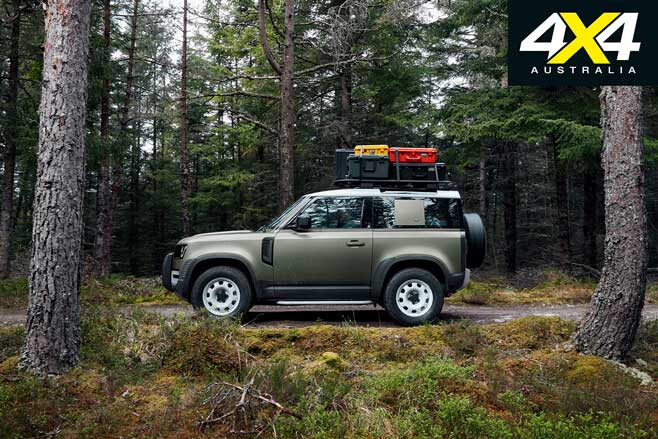
Land Rover engineers have so far not engaged the aftermarket on accessories, instead putting all engineering resources into the broadest line-up of accessories ever offered on a new car. The company says it will consider requests for access to software codes, depending on what the desired outcome is.
43 – Muscling up
Land Rover says the new Defender has “the strongest drive shaft and half shafts ever deployed on any of our vehicles”.
44 – Roof Options
Land Rover’s iconic “Alpine lights” are back for the new Defender. The rear roof-mounted windows built into the roof have become an iconic Land Rover design feature, one formerly used on early Discoverys.
Land Rover is offering three roofs for its new Defender. There is a basic metal roof or a panoramic sunroof. But the most interesting is a safari-inspired retractable canvas roof that allows those in the front or back to get a better view by poking their heads out of the roof.
45 – Stopping power
There is no mechanical link between the brake pedal and the brake discs. Instead the Defender gets a brake-by-wire system claimed to provide more “precise, linear brake pressures”. Engineers also say the electronic braking system helps with off-road traction due to the ability to better regulate braking to each individual wheel.
46 – Air suspension
The Defender’s air suspension system (optional on 90, standard on 110) adds another 135mm of lift at the front and 145mm at the rear.
47 – Ground clearance
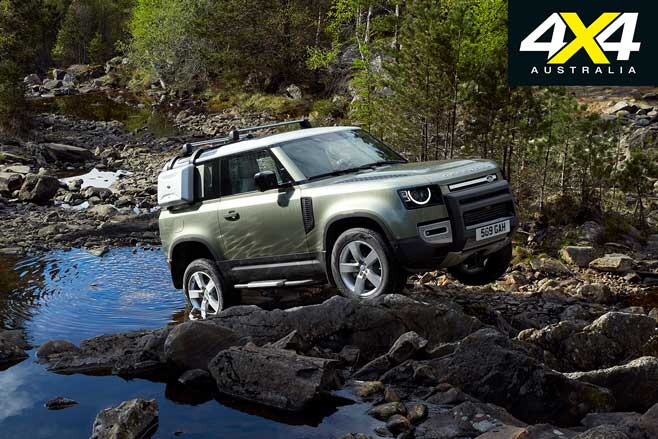
The raw numbers suggest the old Defender had superior ground clearance to the new one: 323mm versus 218mm for cars with steel suspension and up to 291mm for cars with the optional air suspension. However, riding on independent suspension means not having the diff hanging down in a fixed position, something engineers say allows more running clearance on the new Defender.
48 – Any angle
The new Defender can ascend or descend slopes up to 45 degrees. It can also traverse side slopes up to 45 degrees. Of course, the fitment of some accessories – including the roof rack – could alter that due to changes in the centre of gravity.
49 – Activity key
The Defender will be offered with Land Rover/Jaguar’s Activity Key, which has been updated to incorporate a watch. The rubberised band can be worn like a fitness track on your wrist and is water resistant to four atmospheres (40m). It can be used to lock and unlock the car by the press of a button on the watch. Whereas previously you had to hold the key at a specific place on the car, the car can now sense if it is nearby and allow the doors to unlock.
50 – Rear camera
While the rear camera is always exposed to allow for ClearSight Rear View function that places an unobstructed image in the rear vision mirror, it also has a hydrophobic coating to help keep it clear of mud and water.

